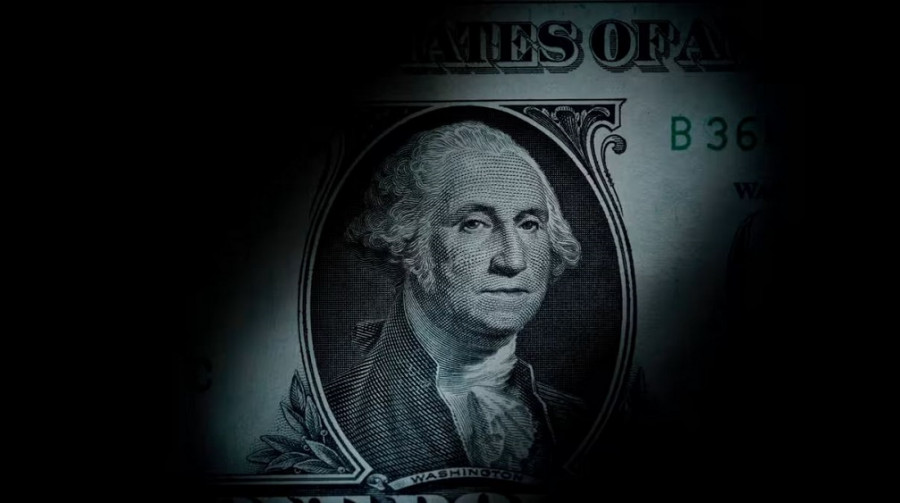See also


 03.02.2025 01:33 AM
03.02.2025 01:33 AMThe first week of February promises to be informative and volatile. The January meetings of the Federal Reserve and the European Central Bank, which took place last week, have set a downward trend for the EUR/USD exchange rate. Upcoming macroeconomic reports could either reinforce this downward trend or weaken it, depending on the nature of the releases.
Additionally, in the coming days, the market will respond to Donald Trump's announcement of tariffs on goods from China, Canada, and Mexico.
On Monday, the U.S. ISM Manufacturing Index will be published, which is an important macroeconomic indicator that can trigger significant volatility in the EUR/USD pair. Over the past two months, the index has shown an upward trend. In October of last year, it was at 46.5, then rose to 48.4 in November and 49.3 in December. Forecasts suggest that the January figure will remain at December's level. However, if it unexpectedly enters the expansion zone (i.e., exceeds the 50-point mark), the dollar could receive strong support, especially given the mixed data on U.S. economic growth in Q4 of last year, which showed a growth of 2.3% compared to the forecast of 2.6%.
On Tuesday, the JOLTs data (which reports the number of job openings in the private sector at the end of the reporting month) will be released. This labor market indicator is highly informative, although it is considered a lagging one. Still, significant deviations from the forecast could lead to market volatility. Over the past two months (October and November), the number of job openings increased, reaching 8.098 million in November. A decline to 7.880 million is expected in December. If the figure stays above the 8 million mark, the dollar will likely receive some background support.
On Wednesday, another key labor market report in the U.S. will be released—the ADP Employment Report. According to the agency's specialists, 149,000 jobs were created in the private sector in January. Recently, there has been a lack of correlation between ADP reports and Non-Farm Payrolls; however, if the unofficial data falls within the "green zone," the U.S. dollar is likely to respond positively.
Also on Wednesday, the ISM Services PMI for the U.S. will be published. Since July of last year, this index has consistently remained in expansion territory, meaning it has been above the 50.0 mark. Most experts believe that January will be no different, predicting the index will rise to 54.2 this month.
On Thursday, Eurostat will release data on retail sales in the eurozone. A negative trend is anticipated, with a decline of 0.2% expected in December, following minimal growth of 0.1% in November.
The most important report of the week will be released on Friday, revealing the dynamics of the U.S. labor market. Preliminary forecasts suggest that the U.S. unemployment rate in January will remain at December's level of 4.1%. However, non-farm employment is expected to grow by only 154,000 jobs. In the previous two months, this figure exceeded 200,000, so it's crucial for dollar bulls that January's figure also surpasses 200,000. It's important for the value of the U.S. dollar that the growth rate of average hourly earnings does not slow down. In December, this indicator decreased to 3.9%, following two months of stagnation at 4.0%. For January, experts forecast a further decline to 3.8%. If, contrary to these forecasts, the figure returns to the target of 4%, it would provide strong support for the dollar.
U.S. President Donald Trump has shifted from rhetoric to action by issuing an executive order that will introduce 25% tariffs on imports from Mexico and Canada, starting February 4. An exception will be made for Canadian energy products, which will face a 10% tariff. Additionally, a 10% tariff has been implemented on goods from China. In his order, Trump stated that these measures were introduced "due to the serious threat of illegal immigrants and deadly drugs, including fentanyl."
In response, Canada has announced that it will impose retaliatory tariffs on U.S. goods. These tariffs will be set at 25% on goods totaling $106 billion. The affected items include American alcoholic and non-alcoholic beverages (such as beer, wine, bourbon, and fruit juices), fruits, vegetables, perfumes, clothing, and footwear. Mexico has also announced its intent to respond with "tariff and non-tariff measures," although President Claudia Sheinbaum expressed a willingness to engage in negotiations simultaneously.
China reacted to Trump's decision by announcing that it would file a complaint with the World Trade Organization (WTO) and "take appropriate countermeasures," although the specifics of these measures are still unclear.
Most analysts believe that the primary consequence of the tariffs will be inflation, which will affect all countries, including the United States. In this context, the Federal Reserve is unlikely to ease monetary policy. If inflation continues to rise—since the overall consumer price index has been increasing for several months—the Fed may even consider raising interest rates.
Trump's declared trade war is expected to heighten risk-off sentiment in the markets, resulting in increased demand for safe-haven currencies like the dollar, particularly in the EUR/USD pair.
From a technical perspective, the EUR/USD pair on the daily (D1) timeframe is currently positioned at the middle line of the Bollinger Bands indicator, which aligns with the Kijun-sen line. If sellers manage to break through this price barrier, they will clear the way to the next support level at 1.0300, which is the lower boundary of the Kumo cloud on the H4 timeframe. The primary target for the downward movement is 1.0220, located at the lower line of the Bollinger Bands on the daily chart.
You have already liked this post today
*The market analysis posted here is meant to increase your awareness, but not to give instructions to make a trade.
Market optimism, fueled by Donald Trump's active manipulation of the tariff narrative, was short-lived. Traders remain focused on the escalating tensions between the U.S. and China following the U.S. Department
A few macroeconomic events are scheduled for Wednesday, but some important reports will be released. However, the current key issue is not the reports' significance but how the market will
InstaTrade
video analytics

Your IP address shows that you are currently located in the USA. If you are a resident of the United States, you are prohibited from using the services of InstaFintech Group including online trading, online transfers, deposit/withdrawal of funds, etc.
If you think you are seeing this message by mistake and your location is not the US, kindly proceed to the website. Otherwise, you must leave the website in order to comply with government restrictions.
Why does your IP address show your location as the USA?
Please confirm whether you are a US resident or not by clicking the relevant button below. If you choose the wrong option, being a US resident, you will not be able to open an account with InstaTrade anyway.
We are sorry for any inconvenience caused by this message.

